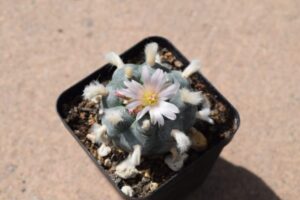Texas boasts an array of cactus plants that flourish in its diverse climates and ecological regions. From the deserts of West Texas to the subtropical areas of the Rio Grande Valley, these hardy plants have adapted to the unique conditions found throughout the Lone Star State. Understanding the various types of cacti found in Texas not only provides botanical knowledge but also enriches landscaping choices, horticultural practices, and conservation efforts for home gardeners and enthusiasts alike.
In this exploration of Texas cacti, we will delve into their classifications, distinctive features, preferred habitats, and cultivation needs. Additionally, this discussion aims to alleviate common concerns among potential cactus buyers regarding care and maintenance, especially for novice gardeners.
The State of Cacti: An Overview
The term “cactus” refers to a family of flowering plants known for their succulent stem structures, which store water efficiently to endure arid conditions. Within Texas, the varied geography fosters a rich diversity of cactus species, each with unique adaptations to their environment. These plants generally exhibit minimal foliage and have needles or spines to minimize water loss and protect against herbivorous animals. Furthermore, cacti have evolved remarkable techniques for survival, including photosynthesis through their stems, allowing them to thrive with limited water access.
Diverse Ecological Habitats in Texas
Texas features several ecological zones where different cacti species flourish. These include:
Desert Regions: The iconic Texas desert, particularly in the Chihuahuan Desert, supports a wealth of cacti capable of withstanding extreme temperatures. The Saguaro cactus, recognized by its tall, branching arms, is synonymous with the American Southwest but has some relatives that mirror its iconic appearance in the lower elevations of Texas.
Subtropical Zones: The Rio Grande Valley, characterized by a humid subtropical climate, is home to unique cacti like the Golden Barrel cactus. It thrives in soils rich in organic material and is better suited for warmer, wetter environments, contrasting with the xerophytic adaptations seen in more arid species.
Rocky Hill Country: The Hill Country region, known for its rugged topography, hosts various prickly pear cacti, renowned for their colorful fruit, often called “tunas.” These adaptable plants can flourish in rocky, well-drained soils, showcasing both ornamental beauty and culinary potential.
Types of Cacti Found in Texas
As Texas is endowed with numerous cactus species, several stand out in terms of popularity, ecological significance, and cultural relevance. Below are some of the prominent types of Texas cacti:
Opuntia (Prickly Pear Cactus):
One of the most widespread cacti in Texas is the Prickly Pear, identifiable by its flat, paddle-shaped pads. This cactus blooms spectacularly in spring, adorned with vibrant flowers that range from yellow to red. Beyond its stunning appearance, the prickly pear is esteemed for its edible pads and fruit, making it a valuable resource for food enthusiasts and wildlife alike.
Ferocactus (Barrel Cactus):
Ferocactus species, particularly the Texas Barrel Cactus, are notable for their stout, cylindrical shapes and remarkable spines. These cacti can grow both solitary or in clusters and tend to produce striking blooms atop their surfaces. Many varieties of Ferocactus are cultivated for ornamental use, appreciated for their resilience and dramatic visual impact in desert landscaping.
Echinocactus (Golden Barrel Cactus):
The Golden Barrel cactus, a notable member of the Echinocactus genus, is admired for its striking round shape and golden-yellow spines. Its bright yellow blooms, which appear sporadically throughout the year, add visual interest. This cactus is often sought after for collecting and ornamental gardens due to its unique appearance, making it perfect for those aiming to enhance the aesthetics of their yards.
Yucca (Not a Cactus, But Close):
Often mistakenly associated with cacti, Yuccas are succulent plants featuring long, sword-like leaves and tall flower spikes. While not a cactus in strict terms, they are frequently found in arid regions of Texas and share several similarities with true cacti. Their architectural presence and drought tolerance make them a favorable choice for xeriscaping and low-maintenance gardens.
Addressing Common Buyer Concerns
Potential buyers often wonder about the care and maintenance of these hardy plants. Essential considerations include:
Watering:
Cacti require a tailored watering regimen, particularly in the growing season (spring and summer). It is crucial to allow soil to dry completely between waterings to prevent root rot. Conversely, during dormancy in fall and winter, cacti require minimal moisture. Understanding the specific needs of each cactus species greatly impacts their health and longevity.
Sunlight Requirements:
Most Texas cacti thrive in full sun, appreciating bright, direct sunlight for optimal growth. However, it is vital to acclimate them gradually to prevent sunburn, especially if they are transplanted from lower light environments.
Pest Management:
Cacti can be susceptible to pests like mealybugs and scale. Regular inspections are beneficial, and maintaining good air circulation around the plants can help mitigate infestations. Integrating natural pest control solutions ensures environmentally friendly practices.
Conclusion: Embracing the Beauty of Texas Cacti
In conclusion, the types of cactus plants found throughout Texas contribute significantly to the state’s ecological landscape and cultural heritage. With diverse species adapted to the varied climates of Texas, there is a thriving community of enthusiasts eager to explore these plants. By addressing common buyer concerns and understanding the basic needs of these succulents, novice gardeners can confidently incorporate cacti into their landscapes, enhancing their understanding of Texas’s unique flora.





Leave a Comment